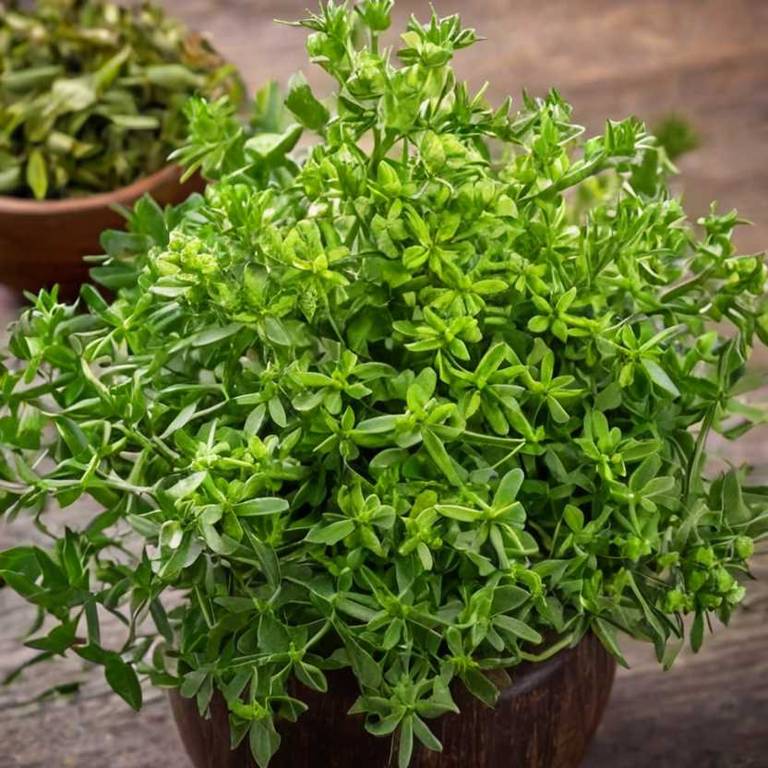By Leen Randell
Updated: Jul 21, 2024
10 Medicinal Constituents Of Euphorbia Helioscopia (Sun Spurge)

Euphorbia helioscopia has active constituents such as flavonoids, terpenoids, and alkaloids.
These compounds exhibit anti-inflammatory and antioxidant properties, which can help alleviate symptoms of arthritis and other inflammatory conditions. The constituents also have antimicrobial and antiviral effects, which can aid in wound healing and boost the immune system, potentially reducing the risk of infections and diseases.
This can improve people's lives by reducing pain and inflammation, and promoting overall health and well-being.
This article explains in details the 10 best active constituents of Euphorbia helioscopia.
1. Resin
Euphorbia helioscopia resin is a natural product extracted from the sap of the plant's stems.
This resin has been used for centuries in traditional medicine and folk remedies, particularly in Africa and Asia, where it is valued for its anti-inflammatory, antiseptic, and antibacterial properties.
The resin can be applied topically to wounds and skin conditions, or ingested as a treatment for various ailments, including fever, diarrhea, and respiratory issues.
2. Flavonoids
Euphorbia helioscopia flavonoids is a class of plant secondary metabolites that are abundant in its leaves and stems.
These compounds have been found to possess various biological activities, including antioxidant, anti-inflammatory, and antimicrobial properties.
Flavonoids from Euphorbia helioscopia have been reported to exhibit potential therapeutic effects against diseases such as cancer, cardiovascular disorders, and neurodegenerative diseases.
3. Saponins
Euphorbia helioscopia saponins is a unique compound derived from its roots and leaves.
These glycosides have been shown to exhibit significant biological activities, including antimicrobial, antifungal, and antiviral properties. Saponins in Euphorbia helioscopia have also demonstrated anti-inflammatory effects, as well as the ability to inhibit the growth of cancer cells.
Furthermore, they have been found to possess antioxidant and cytotoxic activities, making them a promising area of research for potential therapeutic applications.
4. Triterpenes
Euphorbia helioscopia triterpenes is a class of compounds found in the plant's latex.
These triterpenes have been studied for their potential medicinal properties, including anti-inflammatory and antioxidant activities.
The most abundant triterpene in E. helioscopia is euphorbol, which has been shown to exhibit significant cytotoxic effects against various cancer cell lines, making it a promising candidate for the development of new anticancer therapies.
5. Phenolic acids
Euphorbia helioscopia phenolic acids is a class of bioactive compounds that have been isolated from its leaves and stems.
These phenolic acids, including caffeic acid, chlorogenic acid, and ellagic acid, exhibit various biological activities such as antioxidant, anti-inflammatory, and antimicrobial properties.
They have been shown to possess potential health benefits in protecting against oxidative stress and chronic diseases.
6. Alkaloids
Euphorbia helioscopia alkaloids is a group of bioactive compounds found in various species of the genus Euphorbia.
These alkaloids have been shown to possess a range of biological activities, including anti-inflammatory, antimicrobial, and anticancer properties.
They have also been reported to exhibit immunomodulatory effects and demonstrate potential as a natural remedy for various diseases.
7. Fatty acid esters
Euphorbia helioscopia fatty acid esters is a type of bioactive compound that has been isolated from the plant's latex.
These esters exhibit significant pharmacological activities, including anti-inflammatory and antimicrobial properties.
The esters are composed of a variety of fatty acids, such as oleic acid and linoleic acid, which are attached to sugars or other molecules through ester bonds.
8. Glycosides
Euphorbia helioscopia glycosides is a type of bioactive compound found in the plant's leaves and stems.
These glycosides are responsible for the plant's unique ability to photosynthesize and absorb light energy, making it an important component in traditional medicine.
They have been shown to possess anti-inflammatory and antioxidant properties, as well as having potential uses in treating various diseases such as cancer and cardiovascular disorders.
9. Quercetin
Euphorbia helioscopia quercetin is a flavonoid compound that has been isolated from its latex.
Quercetin exhibits potent antioxidant and anti-inflammatory activities, which may contribute to the plant's traditional uses in folk medicine.
It has been shown to have antimicrobial properties and can help protect against oxidative stress, making it a promising natural product for the prevention of chronic diseases.
10. Kaempferol
Euphorbia helioscopia kaempferol is a bioactive compound found in the plant's latex.
This flavonoid has been studied for its potential medicinal properties, including antioxidant and anti-inflammatory activities.
It has also been shown to have inhibitory effects on certain enzymes and to exhibit antimicrobial and antiviral properties, making it a promising candidate for the development of new treatments for various diseases.